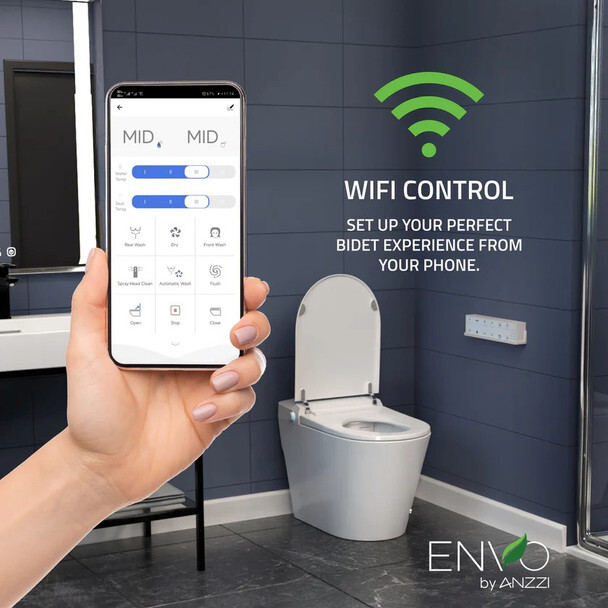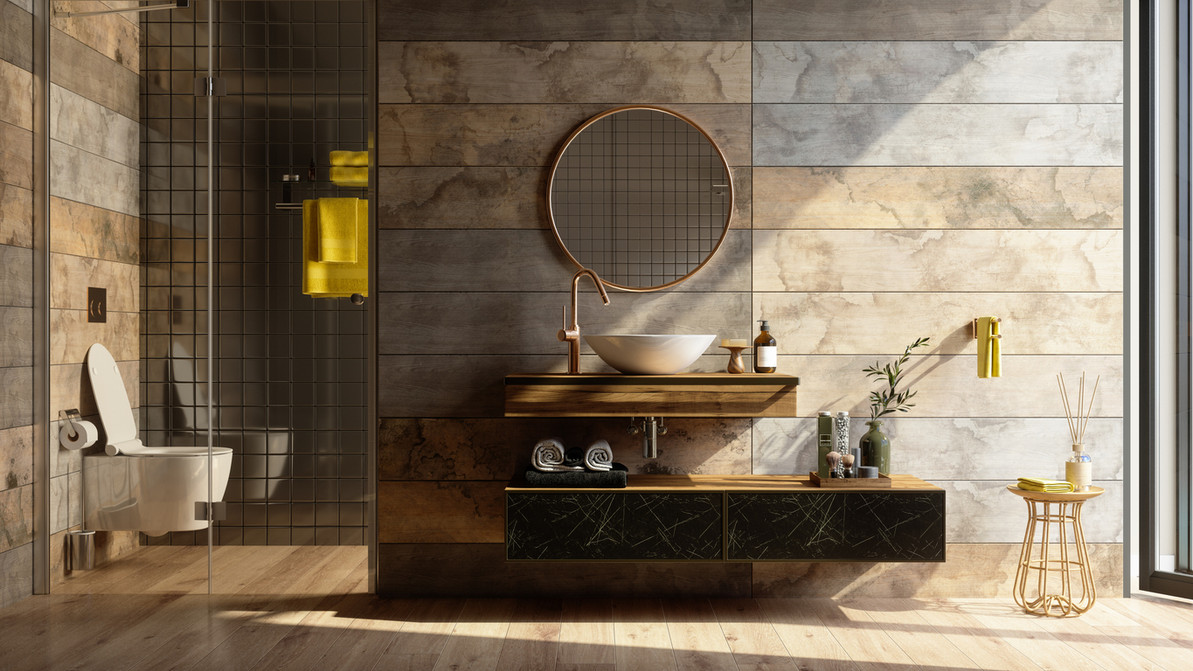Beyond the Flush: The Hygienic Power of Smart Toilets
In the quest for enhanced personal hygiene and comfort, smart toilets have emerged as a groundbreaking innovation, redefining our bathroom experiences. These advanced fixtures offer abundant features aimed at improving cleanliness, convenience, and sustainability. As technology continues to evolve, the future of personal hygiene appears increasingly sophisticated and user centric.
The Hygienic Advantages of Smart Toilets
Smart toilets are equipped with a range of features designed to promote superior hygiene compared to traditional toilets:
- Bidet Functionality: Integrated bidet systems provide thorough cleansing with adjustable water pressure and temperature, reducing the reliance on toilet paper and enhancing personal cleanliness.
- Self-Cleaning Mechanisms: Many smart toilets feature self-cleaning nozzles and bowls, utilizing UV light or electrolyzed water to sanitize surfaces, thereby minimizing bacterial buildup and ensuring a more hygienic environment.
- Touchless Operation: Automatic lid opening and closing, along with sensor-activated flushing, reduce contact with surfaces, lowering the risk of germ transmission.
- Air Deodorizers and Dryers: Built-in air purification systems and warm air dryers contribute to a fresher bathroom environment and reduce the need for paper products, promoting both hygiene and environmental sustainability.
Technological Innovations Shaping the Future of Personal Hygiene
The horizon of personal hygiene is being transformed by cutting-edge technologies
Artificial Intelligence (AI) Integration: AI-powered systems are being incorporated into personal hygiene devices to offer personalized experiences. For instance, AI-enabled showers can adjust water temperature based on user preferences and analyze emotional states to project calming visuals, enhancing both physical and psychological well-being
Continuous Cleaning Technologies: Innovations such as toilets with continuous self-cleaning capabilities are gaining traction. These systems ensure that the toilet remains sanitized after each use, significantly reducing maintenance efforts and enhancing overall hygiene.
- Eco-Friendly Designs: Modern hygiene technologies are emphasizing sustainability. Smart toilets with water-saving designs, such as dual-flush options and efficient flushing mechanisms, contribute to environmental conservation without compromising performance.
Health Monitoring Features: Future developments may include health-tracking capabilities within bathroom fixtures, allowing users to monitor vital signs and detect potential health issues early, integrating wellness into daily hygiene routines.
Embracing the Hygiene Revolution
The integration of advanced technologies into personal hygiene practices offers numerous benefits:
- Enhanced Cleanliness: Automated and touchless features minimize human error and reduce the spread of germs, leading to a cleaner environment.
- Increased Comfort: Personalized settings for water temperature, pressure, and ambient conditions provide a tailored and comfortable experience.
- Environmental Sustainability: Efficient water usage and reduced reliance on disposable products contribute to eco-friendly living.
- Health Insights: The potential for health monitoring can lead to proactive wellness management and early detection of medical conditions.
As we look to the future, the fusion of technology and personal hygiene is set to deliver unprecedented levels of cleanliness, convenience, and health awareness. Embracing these innovations not only elevates our daily routines but also aligns with broader goals of sustainability and well-being.
In the pursuit of advanced personal hygiene and comfort, the ANZZI ENVO Echo Elongated 1.28 GPF Smart Bidet Toilet stands out as a prime example of modern bathroom innovation. This smart toilet integrates a suite of features designed to enhance cleanliness, convenience, and sustainability.

Key Features of the ANZZI ENVO Echo Smart Bidet Toilet
- UV Cleansing Nozzle: Equipped with a UV sterilizer, the nozzle eliminates 99.9% of bacteria, ensuring a sanitary experience with every use.
- Automatic Lid and Seat: The lid and seat open and close automatically via motion sensors, foot sensors, or remote control, promoting hands-free operation and reducing contact with surfaces.
- 3-in-1 Adjustable Bidet Nozzle: Offers three spray modes—Weak/Child wash, Strong/Lady care wash, and Strong wash—with adjustable positioning for thorough cleansing.
- Heated Seat and Water: Features a built-in seat warmer and maintains water at a constant, comfortable temperature, enhancing user comfort.
- Automatic Flushing: Provides multiple flushing options, including auto flush, foot sensor flush, remote flush, and manual control flush, ensuring convenience and hygiene.
- Eco-Friendly Design: Utilizes less water per flush than standard toilets and reduces the need for toilet paper, contributing to environmental sustainability.
By incorporating such advanced features, Smart Toilets exemplify the future of personal hygiene, offering users an unparalleled bathroom experience that emphasizes cleanliness, comfort, and eco-consciousness.
When comparing regular toilets to smart toilets, it's essential to weigh their respective advantages and disadvantages to determine which best suits individual needs and preferences.
Regular Toilets:
Pros:
- Affordability: Regular toilets are generally more budget-friendly, both in terms of initial purchase price and installation costs.
- Simplicity and Reliability: With straightforward mechanical designs, they are less prone to malfunctions and are easier to repair when issues arise.
- Low Maintenance: Lacking electronic components, regular toilets require minimal upkeep and do not depend on electricity to function.
- Universal Compatibility: Their standard designs ensure they fit seamlessly into most bathrooms without the need for specialized adjustments or additional infrastructure.
Cons:
- Limited Features: Regular toilets lack advanced functionalities such as bidet systems, seat warming, or automatic flushing, which can enhance user comfort and hygiene.
- Higher Water Consumption: Many traditional models use more water per flush compared to newer, water-efficient designs, potentially leading to increased utility bills.
- Manual Operation: Features like lid opening/closing and flushing require manual effort, which may be less convenient for some users.
Smart Toilets:
Pros:
- Enhanced Hygiene: Integrated bidet functions offer thorough cleansing, reducing the need for toilet paper and promoting better personal hygiene.
- Comfort Features: Amenities such as heated seats, adjustable water temperature, and air dryers provide a luxurious and comfortable bathroom experience.
- Water Efficiency: Advanced flushing systems optimize water usage, contributing to environmental conservation and potentially lowering water bills.
- Touchless Operation: Automatic lid opening/closing and sensor-activated flushing minimize physical contact, reducing the spread of germs.
- Customization: Users can personalize settings to their preferences, enhancing overall comfort and satisfaction.
Cons:
- High Initial Cost: Smart toilets come with a significantly higher purchase price and may incur additional installation expenses due to their complex features.
- Complex Maintenance: The integration of electronic components means repairs can be more complicated and costly, often requiring specialized technicians.
- Dependence on Electricity: Many smart features rely on electrical power, making the toilet inoperable during power outages unless a backup system is in place.
- Potential Privacy Concerns: Some models with connectivity features may raise security issues if not properly safeguarded against unauthorized access.
- Compatibility Issues: Smart toilets may require specific plumbing or electrical configurations, necessitating potential modifications to existing bathroom setups.
In summary, while regular toilets offer simplicity, reliability, and cost-effectiveness, they lack the advanced features that enhance comfort and hygiene. Smart toilets provide a range of modern conveniences but come with higher costs and potential complexities. The decision between the two should be based on individual priorities, budget considerations, and the value placed on technological enhancements in daily life.
Recent Posts
-
Elevate Your Living Space: Living Room Decor Essentials
Creating a warm and inviting atmosphere in your home is easier than you think. A well-designed livin …May 25th 2025 -
Vintage Refrigerators: A Stylish Comeback with IIO at Decor Home Center
Vintage is more than a trend—it's a timeless statement. In today's world of stainless steel sameness …May 24th 2025 -
Transform Your Space: Top Home Decor Trends for 2025
Your home is more than just a place to live—it's your personal retreat, your sanctuary, and an expre …May 3rd 2025




